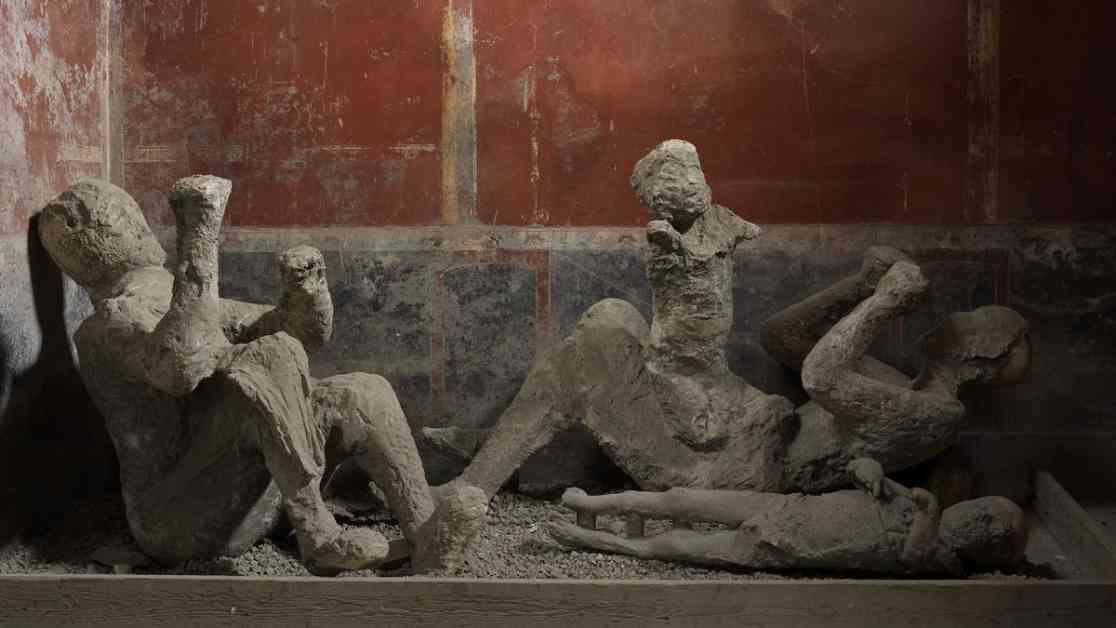A recent study on the victims of the Mount Vesuvius eruption in Pompeii nearly 2,000 years ago has revealed surprising details about their relationships. Ancient DNA analysis showed that some assumptions about the victims were incorrect. For example, an adult with a child on their lap, previously thought to be a mother and child, were actually an unrelated adult male and child. Similarly, a couple found in an embrace were believed to be sisters or mother and daughter, but at least one of them was genetically male.
The study, published in the journal Current Biology, examined the genetics of five individuals who perished in the A.D. 79 eruption. The victims were preserved in casts created by archaeologist Giuseppe Fiorelli in the 1800s, providing insight into their identities. However, modern assumptions influenced interpretations of the relationships between the victims. The new DNA analysis challenged these assumptions, highlighting the importance of integrating genetic data with archaeological and historical information.
The researchers extracted DNA from skeletal remains in five casts and determined the genetic relationships, sex, and ancestry of the victims. They found that the victims had a diverse genomic background, primarily descending from recent eastern Mediterranean immigrants. This confirms the multiethnic reality of the Roman Empire.
The study’s findings have significant implications for the interpretation of ancient societies and archaeological data. By avoiding misinterpretations based on modern assumptions, researchers can gain a more accurate understanding of the past. The discovery of the true relationships between the Pompeii victims adds complexity and depth to their stories.
According to Carles Lalueza-Fox, a biologist specializing in ancient DNA, the cultural lens through which we view the past can distort our understanding. The revelation of a man with a golden bracelet saving an unrelated child presents a more culturally complex narrative than assuming a mother and child relationship. This underscores the importance of questioning assumptions and exploring the nuances of ancient societies.
Overall, the study sheds light on the lives and relationships of the Pompeii victims, challenging traditional gender and familial assumptions. By integrating genetic analysis with archaeological evidence, researchers can enhance their understanding of ancient societies and avoid misinterpretations based on modern perspectives. This deeper insight into the past enriches our appreciation of history and the complexities of human relationships.










